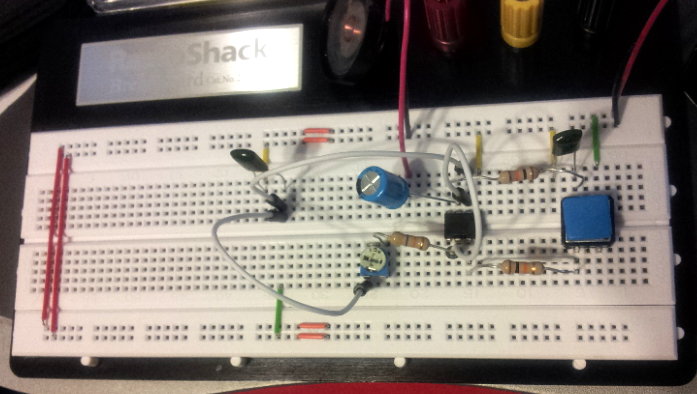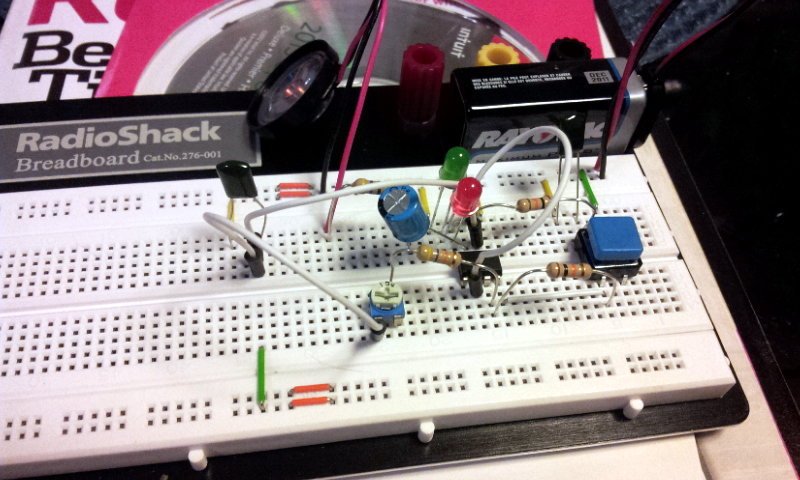I decided to explore a method for measuring the capacitance of an unknown capacitor using the capacitance measuring capability of my DMM. It has a range of 7 orders of magnitude (pF to 20 μF).
The total capacitance of capacitors in a parallel arrangement is just the sum of the capacitors.
C = C1 + C2 + ...
In series, the inverse of the total capacitance is the sum of the inverse of the capacitance of each capacitor.
1/C = 1/C1 + 1/C2 + ...
The total capacitance will be less than the smallest capacitor in the chain.
By placing the unknown capacitance in series or parallel with a known capacitance and measuring the resulting total capacitance, it becomes a pretty trivial matter to calculate the value of the unknown capacitor. Of course the total capacitance still has to be in the DMM’s measurable range.
In theory, either arrangement should yield the same result. I thought it would be interesting to see what kind of results I would get.
Armed with breadboard, some jumper wires and my DMM, I grabbed 5 capacitors that my DMM could measure. One capacitor served as my known (0.47 μF, which measured 0.442 μF according to the DMM). The other four would be my “unknowns”. Each of them was a 1 μF cap with measured values of 0.961, 0.0.964, 0.972 and 0.996 μF. By measuring the total capacitance with the capacitors in series or parallel arrangements, the unknown capacitance is easily calculated and can be compared with the measured value.
I ended up with some interesting results, but probably not terribly significant in the grand scheme of things.
Calculating the capacitance of the unknown capacitor in series with a known capacitor underestimated the measured value by 3%. Calculating the capacitance of the unknown capacitor in parallel with a known capacitor was more accurate, overestimating the value by just 1%.
I suspect most likely source of the difference between the two methods is due to stray capacitance in the breadboard or maybe in the DMM. It’s like having adding extra capacitor in network. With differences this small, I’d consider the two methods to be pretty much the same (as would be expected).
Some of the other “unknown” capacitors I have are pretty big, but armed with enough knowns and putting them in a suitable arrangement of series and parallel layouts, I should be able to bring the total capacitance down to something my DMM can measure, and be able to see just what the unknowns are.
Part 3 will probably see me exploring another method. I may need some more components for that though.
Like this:
Like Loading...

